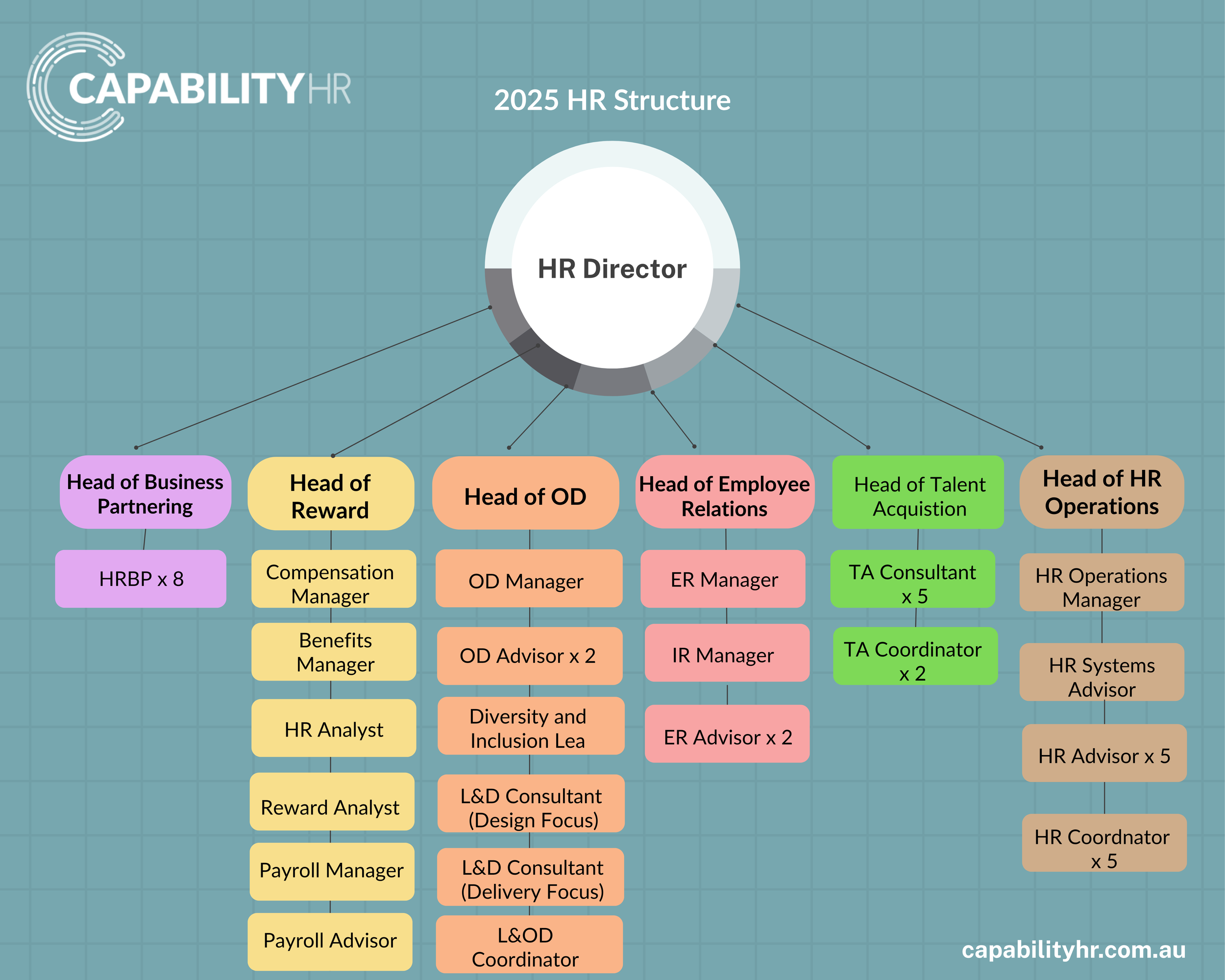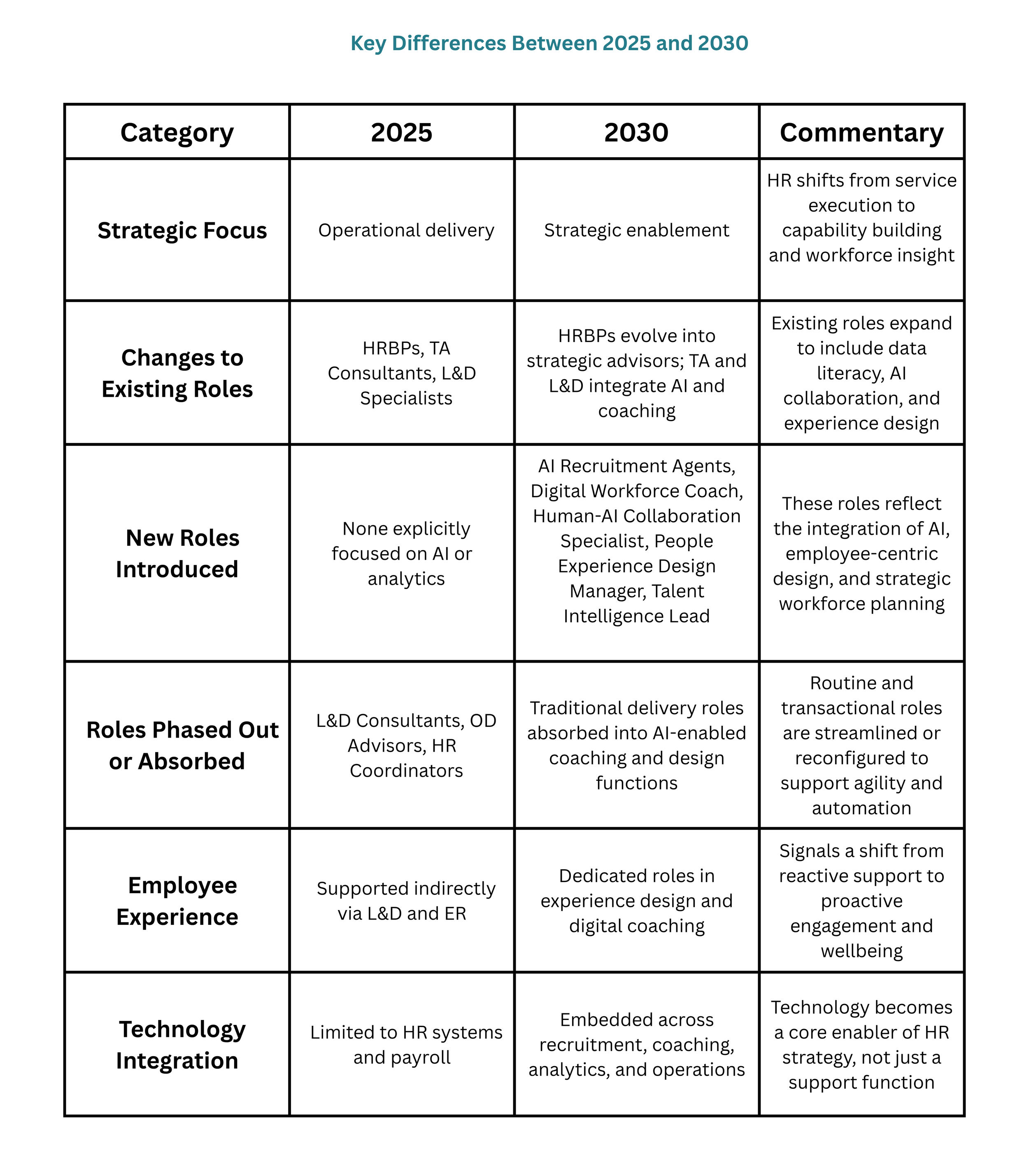This document compares two simplified HR org charts — one representing a 2025 structure and the other a projected 2030 structure. These charts are not intended to reflect detailed reporting lines or matrix relationships. Instead, they highlight the evolution of HR roles and capabilities over a five-year period within a medium-sized organisation (approximately 2000–3000 FTE).
The 2025 chart reflects a conventional HR model focused on operational delivery. The 2030 chart builds on that foundation, introducing strategic enablement roles and AI-integrated functions that support agility, employee experience, and data-driven decision-making.
2025 HR Org Chart Overview
The 2025 structure is built around core HR functions:
Talent Acquisition
Learning & Development
Employee Relations
Compensation & Benefits
HR Operations
Organisational Development
Roles are largely operational and compliance-oriented. HR Business Partners support workforce planning and engagement. Talent Acquisition Consultants manage recruitment pipelines. Learning & Development roles focus on training design and delivery. Compensation and Payroll teams ensure remuneration accuracy and compliance. HR Operations handles systems, coordination, and generalist support.
This structure is service-oriented, with clear functional boundaries – I think most people reading this will know this structure well!
2030 HR Org Chart Overview
By 2030, the HR function evolves to support strategic enablement, digital transformation, and employee-centric design. The structure retains familiar pillars but introduces new capabilities across AI, analytics, and experience design.
New roles include:
AI Recruitment Agents and AI HR Assistants to streamline and personalise recruitment and operations
Digital Workforce Coach and Human-AI Collaboration Specialist to support adoption and capability uplift
People Experience Design Manager and Internal Insights Analyst to enhance employee journeys and feedback loops
Talent Intelligence Lead and AI Systems & Technical Trainer to drive workforce planning and continuous learning
These roles reflect a shift from reactive service delivery to proactive engagement, insight generation, and strategic workforce shaping.
Strategic Implications
The evolution from 2025 to 2030 reflects broader shifts in HR practice. Organisations are moving beyond compliance and service delivery to embrace strategic workforce planning, digital enablement, and employee-centric design.
This transition requires investment in:
Capability uplift across HR teams
Technology adoption and AI literacy
Cultural agility and change enablement
The 2030 structure is not just a reorganisation — it’s a reframing of HR’s purpose. It positions HR as a strategic partner in shaping workforce experience, capability, and resilience.



